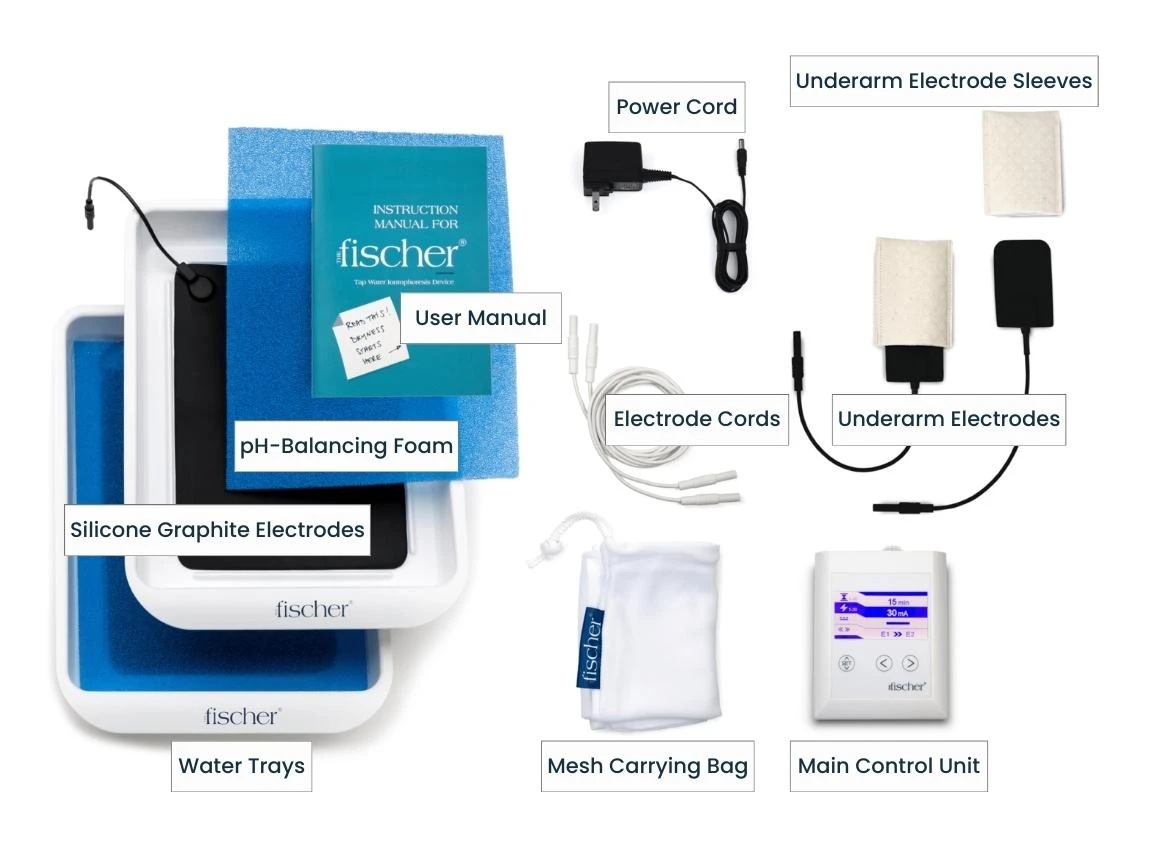- (800) 525-3467
- info@rafischer.com
- 5400 Atlantis Ct. Moorpark, CA 93021
iontophoresis
getting started with

Congrats on taking the first step towards dryness with The Fischer iontophoresis device! Here you'll find a thorough overview on how to use the device to treat hyperhidrosis.
THE FISCHER
VIDEO TUTORIALS
the fischer
HANDS & FEET
the fischer
HANDS
the fischer
FEET
the fischer
UNDERARMS
the fischer
Treatment FAQs
What settings should I use for my first treatment?
Turn on the device by flipping the main power switch, located on the back panel of the main control unit. The display now shows all treatment settings, represented by the symbols on the left.
- The first line is your Timer.
We recommend setting this for 20 minutes. - The second line is your Intensity level.
This varies from person to person. We suggest starting at a level 6 and adjust from there to your comfort needs. - The third line is Current Type.
We encourage patients to treat with Direct Current, which is a represented by a solid line.
You can read more about Pulsed Current vs. Direct Current in the FAQ below. - The fourth line is Direction of Current Flow [E1/E2].
We recommend that patients always keep this setting on Auto. By keeping it on Auto, the polarity changes direction automatically halfway through the treatment. Both areas being treated receive equal distribution of the positive side, which is known to have a stronger therapeutic effect.
Confirm the settings are correct by pushing the SET button.
Place your hands/feet into the water bath trays (if you’re treating your underarms, place the wet axillary electrodes under your arms). Then, you’ll hear a short “beep” that indicates you’ve completed the circuit and treatment has begun.
The Active Treatment Display (ATD) will flash and the treatment timer will start to count down.
Why should I use Direct Current instead of Pulsed Current?
You can think about Direct Current vs. Pulsed Current like this:
Imagine you’re driving on a highway. With direct current, it’s like maintaining a steady speed of 65 mph throughout your journey. It’s smooth, consistent, and efficient. On the other hand, pulsed current is like constantly accelerating and decelerating. You might go from 0 to 100 mph and then back to 0 before finally reaching 65 mph, repeating this cycle multiple times along the highway. This constant variation in speed can be less efficient and more erratic.
Direct Current is an electric current that is one-directional, meaning the flow of the charge is always in the same direction. Positive to positive, negative to negative. With direct current, there is a continuous flow of charged particles lasting at least 1 second.
Pulsed Current is also one-directional, but the intensity changes in value over the course of treatment. It’s perceived as being more comfortable because users can tolerate higher current values. With pulsed current, the flow of charged particles stops for less than 1 second in between cycles.
Pulsed current iontophoresis is not as effective as direct current because patients only receive a small portion of the treatment at the maximum value.
How often should I do treatments?
For the first three weeks, we recommend that you treat every other day for 20 minutes.
- After the first three weeks and you have reached a level of dryness that you’re happy with, you can begin to treat less often. Move on to the next step.
For the next two weeks, we recommend treating every three days.
- If your level of dryness has maintained at the end of this period, you can now consider this your Maintenance Phase. You only need to treat on an “as-needed basis. Most patients will only need to treat once every 3-6 weeks to stay dry.
What do I do if I have a cut on the area of skin I want to treat?
Cover any small skin lesions or skin breaks with petroleum jelly (like Vaseline® brand) or a lanolin wax/cream (such as Lansinoh® brand) prior to your treatment.
This insulates the cuts from the current flow.
Can I use my Fischer device while I'm pregnant or breastfeeding?
The Fischer is not intended for use while pregnant, but it is safe to use while breastfeeding.
How can I make the treatment more comfortable?
Use lukewarm water to make the treatment more comfortable and help keep your skin pores open.
How do I clean my Fischer device & accessories?
Before cleaning and disinfecting, switch off The Fischer and unplug it. Clean the main control unit, water bath trays and electrodes with a damp cloth.
For hygienic reasons, clean foam inserts, sponge pad sleeves, and silicone- graphite electrodes after every treatment session under running water (max. 30° C, 86° F). To this end, remove the silicon electrodes from the sponge pads.
Afterwards, wring the sponge pads and foam inserts out and let them dry. Dry the silicone-graphite electrodes with a cloth.
If necessary, you can machine wash the sponge pad sleeves, foam inserts, and storage bag (max. 30° C, 86° F). A subsequent centrifuging or spinning is to be avoided by all means — items should be air-dried. Due to its textile structure, the sponge pads should only be washed if needed so as not to unnecessarily shorten its service life.
Where can I find technical data on The Fischer?
You can find the technical specifications here.
resources
for patients
Find forms and other resources to help you begin your iontophoresis journey here.
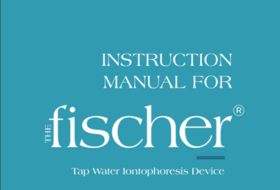
THE FISCHER MANUAL
View a digital version of the Fischer manual here.
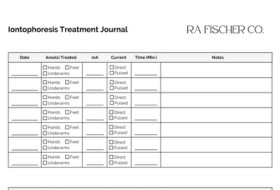
Iontophoresis Treatment Journal
View a digital version of a page of the treatment journal here.
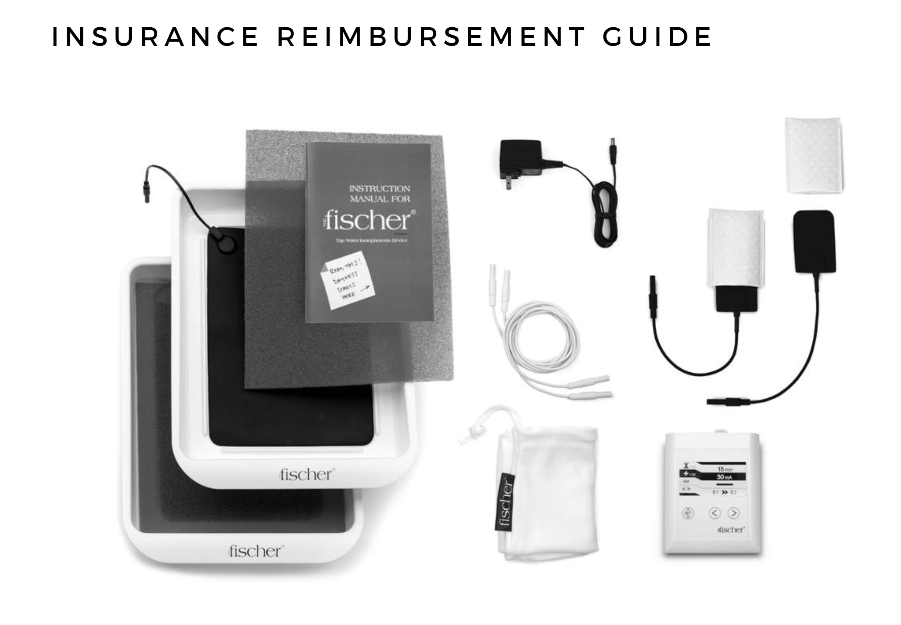
Insurance Reimbursement Guide
See the Fischer Medical Supply Insurance Reimbursement Guide for guidance on seeking reimbursement from your insurance provider.
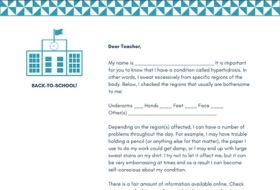
Back-to-School Letter
A letter for students to take to school that helps explains their symptoms to teachers and faculty.

Navigate Living With Medical Conditions
A Program for Parents - RA Fischer Co.
HYPERHIDROSIS CONSULTATIONS
SPEAK WITH OUR SPECIALISTS
- (800)525-3467
- (818)775-2941 (fax)
- info@rafischer.com
![Picture of a patient discussing something with his significant other, holding a pad of paper, dressed professionally [insurance coverage for medical supplies] [ Personalized urology care ]](https://www.rafischer.com/wp-content/uploads/2023/09/ra-fischer-home-medical-supply-iontophoresis-hyperhidrosis-conditions-cancer-neurogenic-bladder-urinary-retention-patient-success-doctor-referral-insurance-6.webp)
LIVE SUPPORT
OFFICE HOURS
9:00am - 4:30pm PST.
We're headquartered in Moorpark, California, USA.
Want quick delivery? Just order by 4:00 PST. From the West Coast to the world, that's how we do healthcare.
We're headquartered in Moorpark, California, USA.
Want quick delivery? Just order by 4:00 PST. From the West Coast to the world, that's how we do healthcare.
